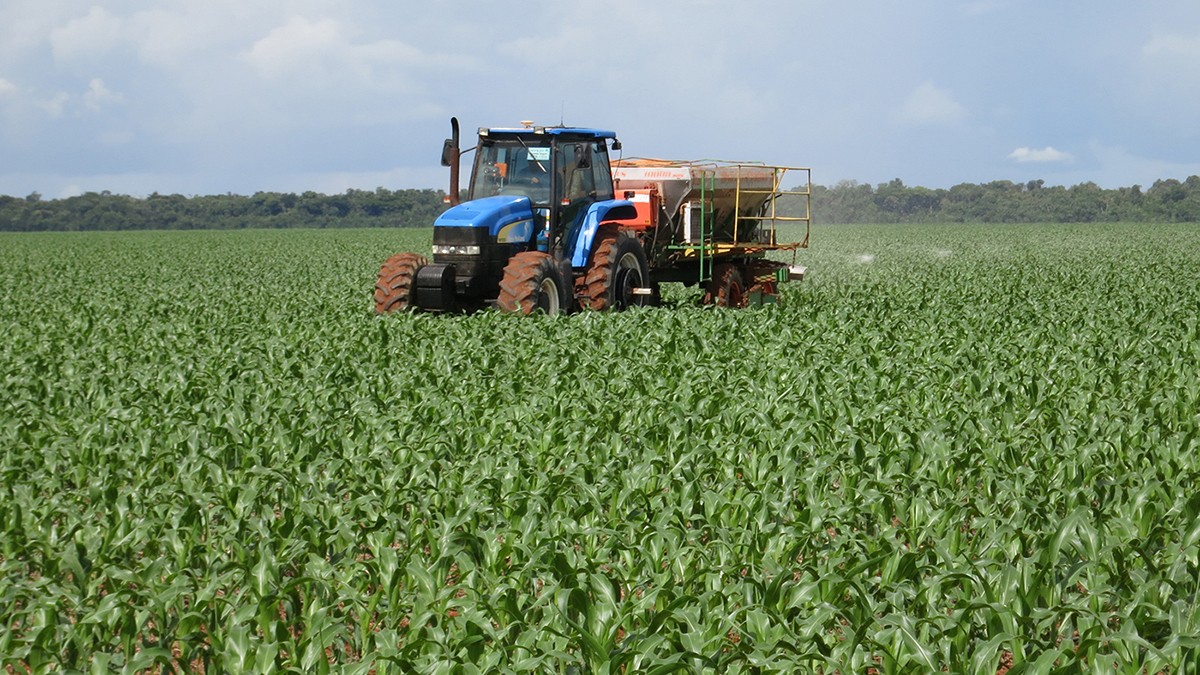A new study from Columbia University finds that nitrogen emissions from agricultural production in the tropics is likely to increase and, in some cases, overtake temperate climates, exposing more people to polluted air and water.
“From the Amazon to Africa, tropical regions are expected to play a growing role in supplying our world with food,” said Alexandra Huddell, a doctoral student at Columbia University and lead author of a recent study published in Global Change Biology. “But we have to be careful to prevent the damage that nitrogen pollution causes in places like China, Europe and the United States.”
Much of the culpability for global nitrogen pollution, caused by the leak of fertilizer from the soil to our air and water, lies with the world’s temperate regions, which include most of North America and all of Europe.
Farmers apply nitrogen-based fertilizer not only to increase crop yields for foods that we eat, but also for feed to sustain livestock. Excess nitrogen produces pollutants, which contribute to climate change, degrade freshwater quality and impair our ability to breathe.
Scientists had predicted that the acidic and nutrient poor soil would keep industrial farming at bay in the tropics, the region of the Earth that surrounds the Equator. So the researchers were surprised to find the rate of emissions in these hot, humid climates was similar to that of the temperate zones.
“Nitric oxide, a polluting gas that causes smog and acid rain, was even higher in the tropics,” Huddell said.
The Columbia-led study is the first to synthesize nitrogen pollution from agriculture in the tropics. The researchers analyzed data from more than 100 studies to assess the amount of nitrogen emissions, including nitrous oxide, nitric oxide and ammonia, that escaped from soil into the atmosphere in the tropical zones. They also assessed the amount of nitrate that seeped into groundwater.
The research has tremendous implications not just for our own health but for the planet.
To feed a growing population, predicted to reach 9.8 billion people by 2050, the World Resources Institute estimates that agricultural production must increase by 70 percent globally.
The tropical regions, which include Brazil, Mexico, all of Central America, India and more than 100 other countries and territories, make up about 40 percent of the Earth’s land mass and are home to a third of the world’s people. It is estimated that half of the world’s population will reside in the tropics in the next 30 years.
“We must balance the need to feed the world’s growing population with the imperative to manage nitrogen responsibly, minimizing the harm to our air, water and climate,” Huddell said.
Production gains will have to come from a range of solutions, including higher-yielding plants, finding better ways to ensure fertilizer is only applied when and where it will actually get to plant roots, and finding more plant-based meat substitutes.
“Such low-tech interventions could go a long way,” Huddell said. “But we need to integrate our understanding of ecology into our agricultural management decisions to make farming more sustainable and productive.”
Without this, she added, the nitrogen footprint in the tropics, and across the world, will grow unchecked.

